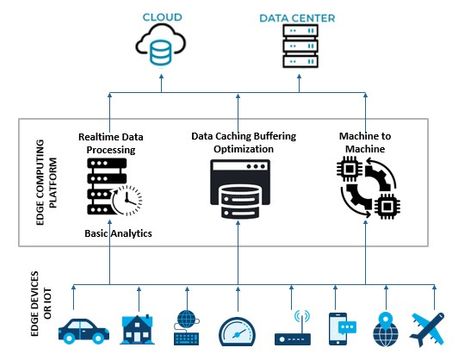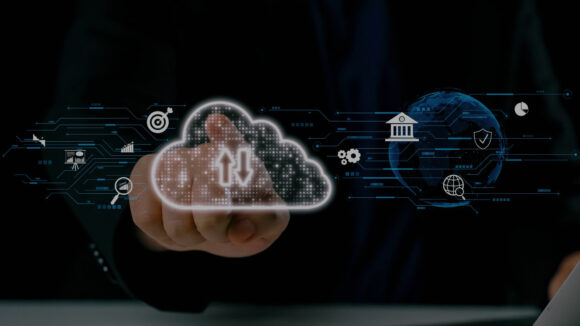In the fast-paced digital world, the demand for immediate access to information and services is at an all-time high. Whether it’s the seamless operation of autonomous vehicles, the real-time monitoring of health metrics, or the instantaneous processing of data in smart cities, the need for speed and efficiency is paramount. This is where edge computing steps in, revolutionizing the way data is processed and bringing us closer to a future that is not only faster but also smarter.
What is Edge Computing?
Edge computing is a distributed computing model that places computation and data storage in close proximity to the point where it’s needed, resulting in quicker response times and reduced bandwidth usage. It is characterized by processing data close to where it is generated, rather than solely depending on centralized data centers.
 Features and Capabilities of Edge Computing
Features and Capabilities of Edge Computing
1. Proximity to Data Source
-
- Latency Reduction: By processing data closer to where it is generated, edge computing significantly reduces latency, leading to faster response times.
- Real-Time Processing: Ideal for applications requiring real-time or near-real-time data processing, such as autonomous vehicles, industrial automation, and augmented reality.
2. Bandwidth Efficiency
- Local Data Processing: Only relevant data or results are sent to centralized data centers, reducing the amount of data transmitted over networks.
- Network Congestion: Helps alleviate network congestion by minimizing the volume of data that needs to be sent to central data centers for processing.
-
3. Reliability and Resilience
- Local Decision-Making: Even if the connection to a central server is lost, edge devices can continue to operate and make decisions locally.
- Fault Tolerance: Improves system reliability by distributing processing tasks across multiple edge nodes, reducing single points of failure.
4. Scalability
- Distributed Infrastructure: Easily scalable as it leverages a distributed network of edge devices rather than relying on expanding centralized data centers.
- Adaptability: The technology can be tailored to various use cases and industries, ranging from smart cities to healthcare and manufacturing.
Edge Computing vs Cloud Computing
Understanding the differences between edge computing and cloud computing is crucial for leveraging their unique strengths in various applications. Here’s a comparison of the two paradigms:
1. Location of Data Processing
- Edge Computing: Processes data near the source of data generation, such as sensors, IoT devices, or local servers. This proximity reduces the need for data to travel long distances, ensuring quicker processing.
- Cloud Computing: Data is processed in centralized data centers that may be geographically distant from the data source. This centralization can introduce higher latency due to the distance data must travel.
2. Latency and Speed
- Edge Computing: Offers low latency by processing data locally, making it ideal for real-time applications like autonomous vehicles and industrial automation.
- Cloud Computing: Typically has higher latency because data needs to be sent to and from centralized servers, making it suitable for applications that can tolerate a certain level of delay, such as data analytics.
3. Bandwidth Usage
- Edge Computing: Reduces bandwidth usage by processing data locally and only sending essential information to the cloud, which can be more cost-effective and efficient.
- Cloud Computing: Requires significant bandwidth to transmit data to and from the cloud, increasing costs and network load.
4. Reliability and Availability
- Edge Computing: Ensures continuous operation even in cases of central server disconnection, enhancing reliability in remote or low-connectivity settings.
- Cloud Computing: Relies on a stable internet connection. Disruptions may affect service availability, but centralized management enables reliable maintenance and updates to be carried out efficiently.
5. Scalability
- Edge Computing: Scaling involves adding more edge devices, which can be done locally and incrementally, but may present challenges when implemented on a larger scale.
- Cloud Computing: Easily scalable by allocating more resources within centralized data centers, offering a seamless expansion of services.
6. Security and Privacy
- Edge Computing: Data is processed locally, reducing the risk of interception during transmission and enhancing privacy by keeping data at the source.
- Cloud Computing: Centralized data centers have strong security measures in place. However, data is more exposed during transmission, requiring stringent protocols to ensure privacy.
Real-World Applications of Edge Computing
1. Internet of Things (IoT)
- Smart Homes and Cities: Imagine a city where traffic lights adjust in real-time to traffic conditions, or a home where appliances anticipate your needs. Edge computing makes these scenarios possible by processing data locally, ensuring immediate and intelligent responses.
- Industrial IoT: In factories, edge computing enables real-time monitoring and control of machinery, leading to increased efficiency and reduced downtime.
2. Healthcare
- Wearable Devices: Health monitors and fitness trackers can process data locally to provide immediate feedback and alerts, facilitating early detection of potential health issues.
- Remote Monitoring: Edge computing allows for the local processing of patient data in remote areas, providing critical health insights without relying on constant connectivity.
3. Autonomous Systems
- Vehicles and Drones: Autonomous vehicles and drones rely on edge computing to process vast amounts of data from sensors in real-time, enabling them to navigate safely and efficiently.
- Robotics: In manufacturing and other sectors, robots equipped with edge computing capabilities can make faster and more accurate decisions on the fly.
4. Retail
-
- Smart Stores: Edge computing can power smart cameras and sensors in retail environments to enhance inventory management, improve customer service, and streamline checkout processes.
- Personalized Shopping: By processing customer data locally, retailers can offer personalized recommendations and promotions, enhancing the overall shopping experience.
The Future of Edge Computing
As we continue to push the boundaries of technology, edge computing is poised to become an integral part of our digital landscape. With advancements in artificial intelligence and machine learning, edge devices will become even more intelligent, capable of processing and analyzing data in ways that we are only beginning to imagine. From enhancing our daily lives to transforming industries, the potential of edge computing is vast and exciting. As we embrace this transformative technology, we are not just improving how we process data, we are reshaping the future.





